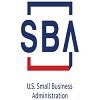How to develop FDA labeling for regulated products?
07/06/2020
Category: Other Blogs
U.S. food and drug labeling are to be compliant with the rules and guidelines of the Food and Drug Administration (FDA). FDA is monitoring the safety of some marketed products to protect public health. This includes the regulation of marketing, manufacturing, and distribution of products like drugs, devices, supplements and tobacco. Product FDA promotes public health through approvals, clearances and registrations under the enforcement of law. FDA labeling is pivotal for compliance by companies (sponsors) who are highly involved in the production of these types of products. Companies that come require FDA labeling cannot develop their product further if they fail to comply with the labeling rules or get approval by the FDA. FDA labeling is often the sole basis for marketing and communications information.
Information mentioned on the label of a drug
A label on a U.S. marketed drug contains all the important information for safe and proper use in an easy to read written format for all the treaters and consumers. The treaters and consumers should read labeling whenever they take medications because changes are implemented over time. Labeling is also provided to avoid its misuse. Proper labeling with FDA labels is a key feature of distributing the product into the U.S. market. FDA labeling means the display of any graphical, printed and written matter containing product information on a box, a container, a wrapper, or package insert given by the manufacturer of that product. There are different types of labeling, not just prescription and non-prescription. Prescription labeling often has the professional labeling for the prescriber, information for patients that the treaters should discuss with patients and medication guides for the patients.
Also Read: An Overview of FDA Fast Track
FDA labeling goes beyond the products’ immediate container, wrapper, etc. It is important that all the information from the drug sponsor is balanced in presentation of benefits and risks. Treaters and consumers use this information for assessment of individualized benefit and risks. Some additional examples of labeling are:
• Literature reprints
• Videos
• CD-ROM disks
• PowerPoint presentation
• Brochures
• Automated telemarketing
• Website of product
FDA has also declared that spoken statements by sales representatives of products are also to be balanced and derived from the labeling. It has also declared that presentations and ‘speeches’ associated with different product promotion programs are also a part of the labeling. Contact FDA consultants, such as Biotech Research Group, for advice on drug labeling.
tagging: FDA labeling > FDA labels


